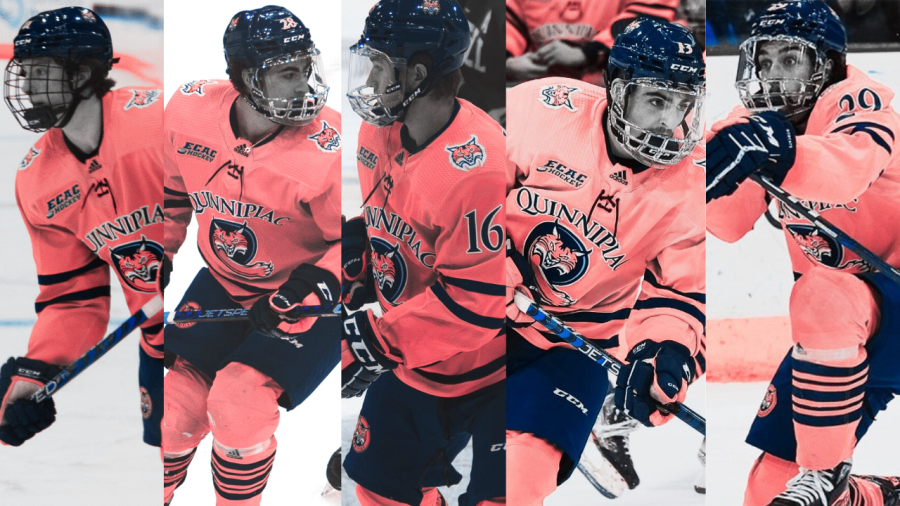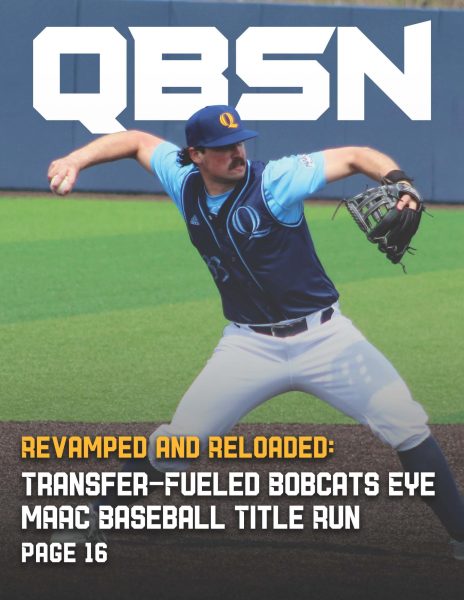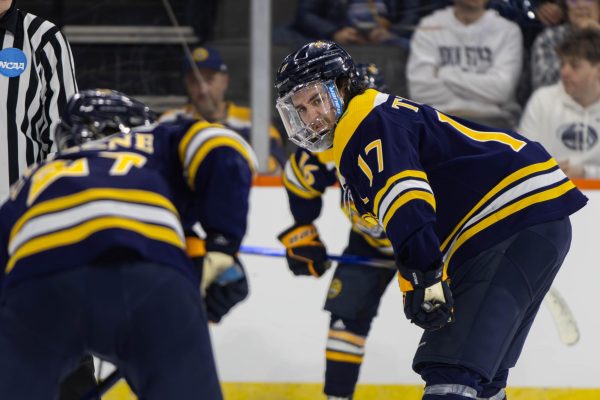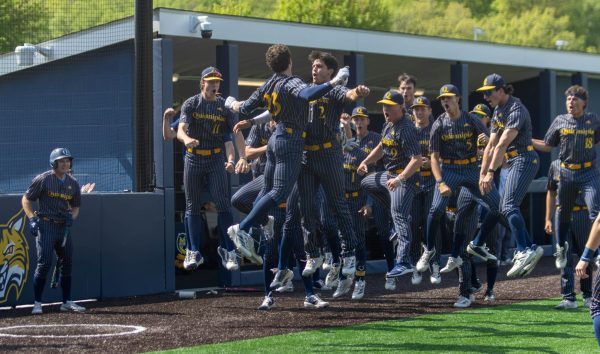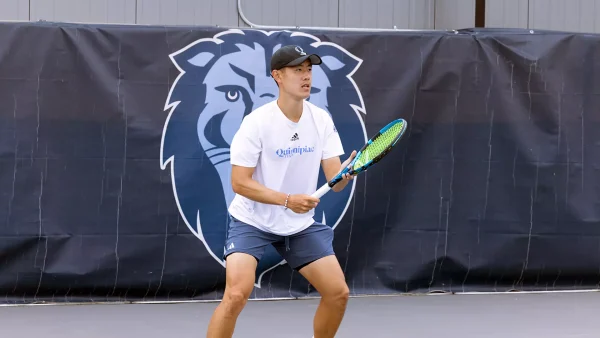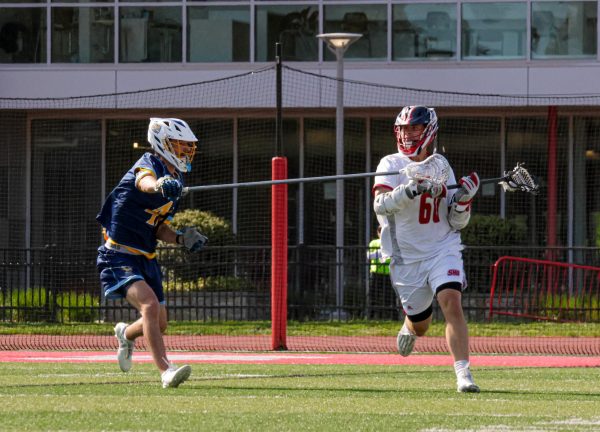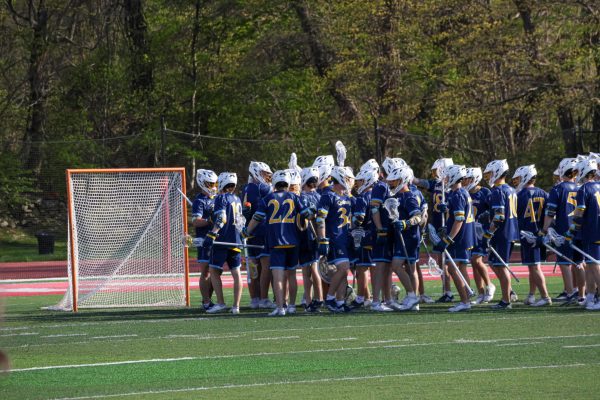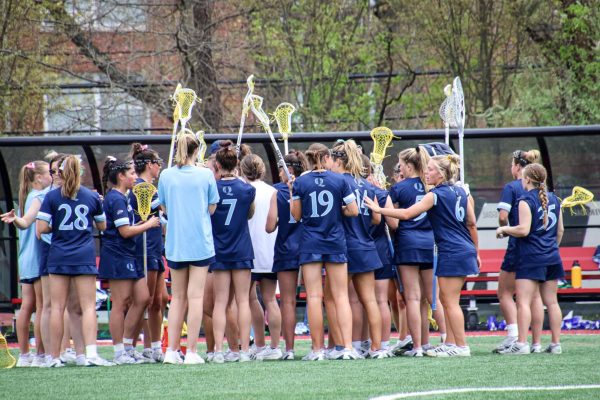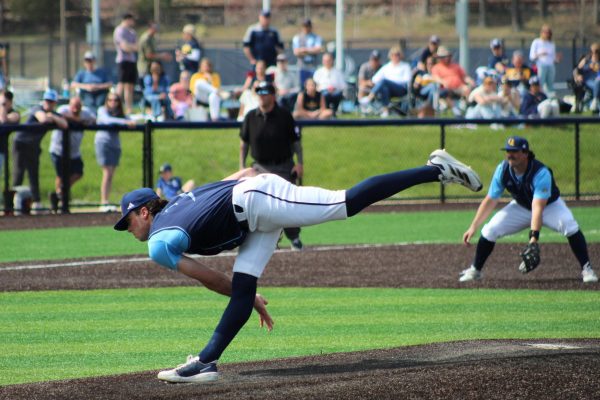The rise to stardom: how did the Bobcats’ youth develop into Quinnipiac hockey legend?
April 23, 2023
It’s rare to see an athlete go from a zero to a hero yet it’s even more absurd that several Bobcats evolved from non-factors into legends overnight.
How did the Bobcat’s sensational youth movement turn a potential rebuild year into the university’s paramount championship?
Six skaters started the season as seeds and blossomed into trees, performing Shakespeare, moving the world of sports with a voice like Luciano Pavarotti. Their stories prove that anyone can reach their ultimate goals.
The two profound trios consisted of “The Sherbrooke Boys” and “The York Hill Boys.” Following the Hamden Heavyweights’ sensational National Championship victory a simple question arose, “Where did they come from?”
Different paths lead to the teams to glory.
The Sherbrooke Boys:
Bishops College, College Du-Mont-St-Anne, the Iowa Wild 16 and 18 AAA programs, to the Wenatchee Wild, and then the Muskegon Lumberjacks in the USHL. That’s how deep the roots are for the Bobcat’s wonder twins Cristophe Tellier and Christophe Fillion.
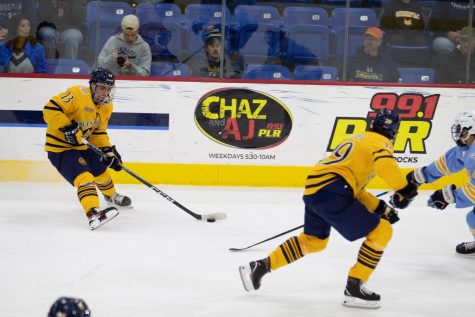
The “Sherbrooke Boys” have played their whole lives together literally on the same team for a decade.
Scouted, recruited, and moved to Hamden, Connecticut. They combined for zero goals in 2021-2022 in a combined 27 games.
Entering the 20232-2023 season, they had proclaimed that they had played their whole lives together, each verbally identifying as “skill” players. Things didn’t click for the duo and
were separated at times in the first month of the season.
In fact, for Fillion, it took until late January to heat up. He recorded six points in the first 24 games and finished the final 18 games with 14 points.
In that span, he recorded a five-game point streak of seven points and in the seven games Quinnipiac competed in from Jan. 21 to Feb. 17, he recorded 10 points. A boom on the growth chart.
As for Tellier, he came onto the scene roaring and had some hot and cold streaks. The short droughts were buoyed because he didn’t have to drive play for the Bobcats.
Rand Pecknold spoke about their chemistry following the NCAA regional, “I really like having the Christophe’s playing together, they have a unique chemistry from growing up together. I love the two of them together, and we didn’t have them together for a little while because Desi was hurt.”
In the Bobcat’s biggest test of the season in early January, Tellier scored the game-winner against Harvard.

Jump a few months to St. Patrick’s Day and a full team letdown saw the duo stifled. Following Skylar Brind’Armours major penalty, they had to split up, which would only hurt the Bobcats as a collective.
The only remaining games following the double overtime loss to the “Mitton Miracle” would be on the biggest stages, and not a single media outlet or opponent knew what was coming.
Their growth was silent. They aren’t the fastest, and they aren’t the heaviest hitting but their synergy is off the charts and blossomed under the bright lights.
Against Ohio State, they assisted with each other’s goals. Fillion drove to the net to tie the game at one and Tellier scored the goal of the tournament with his supreme set of hands to put the Bobcats up 3-1.
The following game in Tampa Bay, Florida, all the talk was about Michigan’s National Hockey League level talent. Lo and behold, Tellier and Fillion, came through on the ice for Jacob Quillan’s opening goal with each registering an assist on Zach Metsa’s back-breaking score to advance to the National Championship.
On the biggest stage in college hockey, the Bobcats were looking up at a 2-0 deficit. The captain carried play down the wing and Tellier scored at the front of the net to cut the lead to one.
The wonder twins were clutch in the program’s Big Ten sweep en route to winning it all. From Sherbrooke to Tampa, and back to Hamden next year, they will be critical to the team’s title defense campaign.
It also goes without saying the lines centermen, Victor Czerneckianair had seen growth as the season progressed. His impact wasn’t as critical to the scoresheet as his linemates in the thick of the season, but the first-year’s play off the puck holds a bright future.
A team player, he excelled in getting pucks on the net and drives the center lane displaying a center of gravity that provides sturdy puck protection.
Pecknold sang his praises following the ECAC tournament loss to Colgate, “we didn’t do a lot of things right, we did a lot of things wrong,” Pecknold said. “We certainly had kids that were excellent, Victor (Czerneckianair) and Desi (Burgart) were our best forwards.”
The quiet third member of the line was crucial in providing balance for his wingers to play off.

The Bobcats united the most lethal line in their history, “The York Hill Boys,” on Nov. 19, 2022, and never looked back.
Each player carved a name out for themselves, starting their seasons off in different places.
Quillan came off of a two-goal season. Sam Lipkin was playing in the USHL for the Chicago Steel, a team absolutely loaded with high-end talent. Collin Graf decided not to return to Union because head coach Rick Bennett left the program and staff changes led to differences in the program.
The lineup for the Oct. 2 exhibition game vs. the Providence Friars: Lipkin was not dressed, Quillan was on the left wing of Brind’Armour, and Graf featured on the right wing of Mike Lombardi and Burgart.
On Nov. 5 against Cornell, Burgart centered Lipkin and Graf while Quillan was on the flank of TJ Friedmann.
The antithesis to these specific lines is that matchups drove these decisions. Shakeups are necessary to play certain opponents but the “York Hill Boys” line was not united for another few weeks. Not once, and not in response to matchups needs.
All three players had been tearing it up on different lines. Graf recorded 12 points in 10 games. Lipkin had seven points in 10 games. Lipkin took a little bit to heat up and uniting with Graf and Quillan rose his ceiling of playmaking.
The center Jacob “The Jet” Quillan recorded a point per game in that span. Once they united, they took over. For the first quarter of the season, they each had made major contributions on their different respective lines, leaving fans thinking, “Imagine if they played together.”
Lo and behold they did. The growth was exponential, their globetrotter’s style dominated weaker ECAC opponents such as Union, St. Lawrence, and Yale.
Are they cut out for the big games? Are they ready to be the big guns? These questions seem irrational in hindsight, with context to when these were legitimate concerns, it seemed that the Bobcats might go as far as the young guys could take them.
Against UCONN in the CT Ice Championship, they were neutralized well by a stronger opponent. Maybe the fun’s over.

Heating up in the ECAC quarterfinal, they were clamped against Colgate. The fun really was over.
Wrong. Having a profound impact on Merrimack in the Bridgeport semi-final, they rebounded from the doldrums of “The Mitton Miracle.”
This threw the trio into the spotlight. Are they as good as Minnesota’s “Three of a Kind” line, Adam Fantilli and company?
They dominated Michigan and combined for three goals to send the team to the summit with Graf tying the title game on a clutch six-on-four power play goal while Lipkin and Quillan combined for the biggest goal in Bobcat’s history to win it all.
The “York Hill Boys” started as players with promise, yet they did not unite until the second quarter of the season.
From that point on they faced question after question. Were they just lightning in a bottle? Could they play in more competitive games? Playoff games? Against NHL talent and media favorites?
They’ll let the rings do the talking.
All six skaters will return next season. From where they started last season as healthy scratches like the “Sherbrooke Boys,” in the USHL like Lipkin and Czerneckianair, on the wing rather than center like Quillan, or at another university as a depth winger like Graf, they’re off the chart’s growth led to a National Championship.
Now they are the mainstays, the rock stars, as five forwards from the 2023 winning team have departed.
These players were never passengers, but now they must drive the bus. Who is going to be the Metsa or the Lombardi to lead when the new recruits are experiencing growing pains? These players rapidly matured from players fighting for a chance to names etched in hockey history.
Youth development to stardom. If they can, anyone can. That’s what these six forwards have done for the program and its reputation.
A new era has begun in Hamden…



